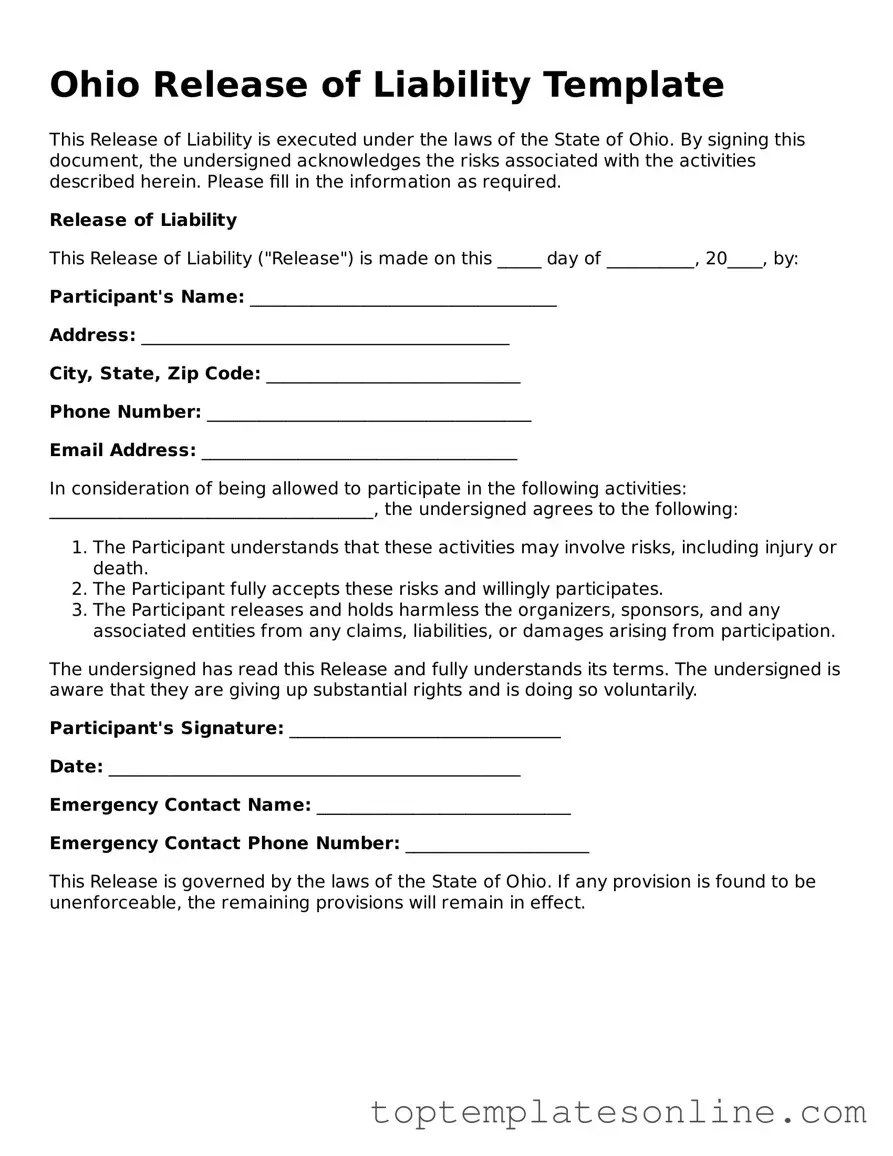The Ohio Release of Liability form serves as a crucial legal document designed to protect individuals and organizations from potential claims arising from accidents or injuries that may occur during specific activities or events. This form is commonly utilized in various contexts, such as recreational activities, sports events, and even certain business transactions. By signing this document, participants acknowledge the inherent risks involved and agree to waive their right to hold the organization or individual liable for any injuries sustained. Key components of the form typically include a clear description of the activity, an acknowledgment of risks, and a statement of intent to release liability. It is essential for both parties to understand the implications of the release, as it can significantly impact the ability to seek compensation in the event of an accident. Additionally, the form often requires the signature of the participant, and in some cases, a parent or guardian if the participant is a minor, ensuring that all parties are fully informed and consenting to the terms laid out. Understanding the nuances of the Ohio Release of Liability form is vital for anyone involved in organizing or participating in activities where risks are present.
